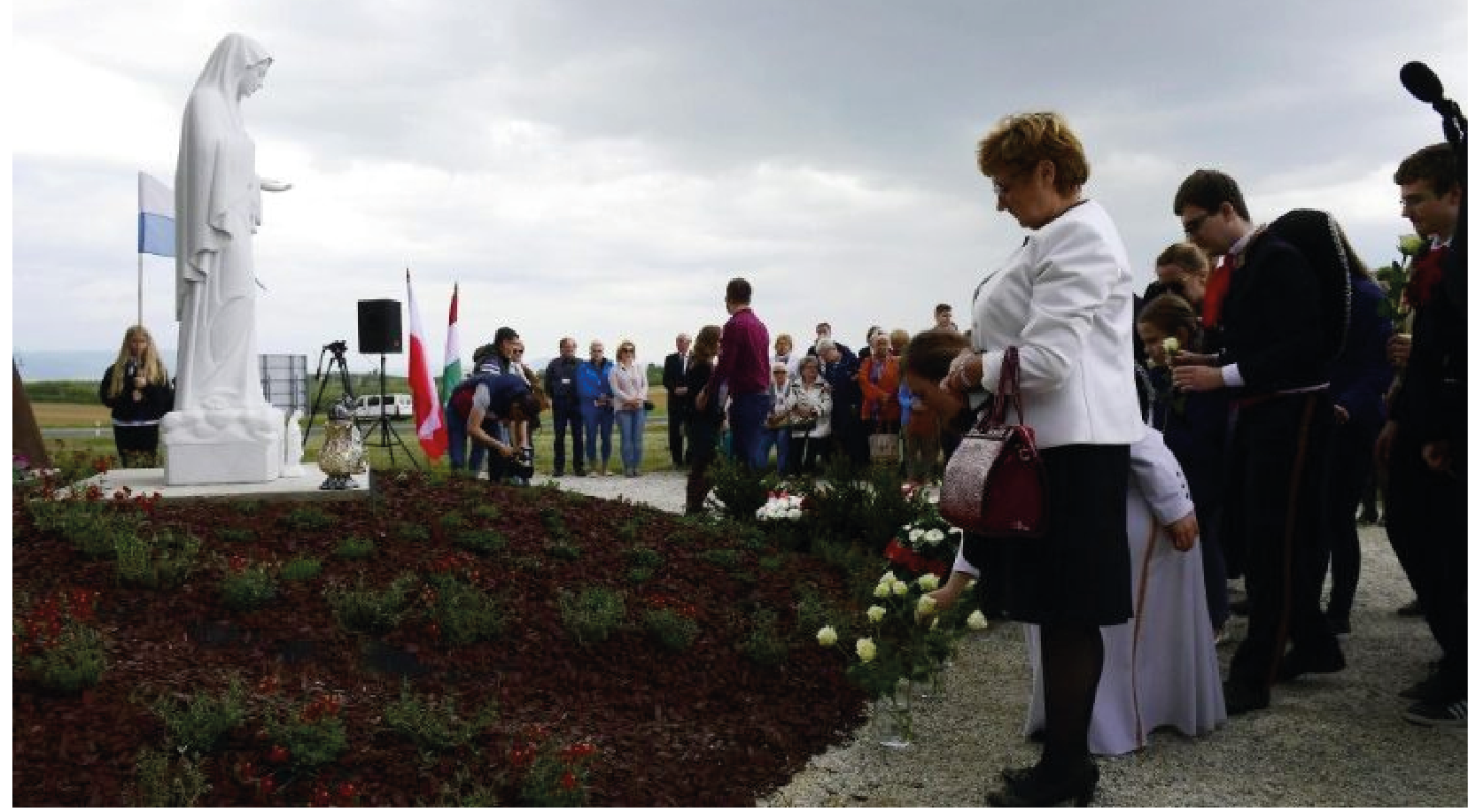(ZENIT News / Vatican City, 16.09.2024).- On Monday, September 16, the Holy See Press Office called for a press conference on Thursday, September 19, to make a statement on the Marian phenomenon of Medjugorje.
Cardinal Víctor Manuel Fernández, Prefect of the Dicastery for the Doctrine of the Faith, and the Secretary for the Doctrinal Section of the same Dicastery, Monsignor Armando Matteo, will intervene. This meeting will be held in a context of expectation, given the historical weight that the alleged apparitions of the Virgin Mary have had since 1981, when six young people of a small Bosnian locality said they had been visited by the Virgin. The statement is taking place four months after the Dicastery issued Norms to Proceed on the Discernment of Alleged Supernatural Phenomena.
The Medjugorje Apparitions: A Decades-Old Debate
Since June 1981, Medjugorje has become the destiny of pilgrimage of millions of people, despite the fact that ecclesiastical authorities have shown skepticism for years. Although at the beginning a local Diocesan Commission issued a negative judgment about the authenticity of the apparitions, the phenomenon never disappeared, and the international Catholic community has continued to debate the veracity of the events.
The so-called “Zara Declaration” of 1991, issued by the Bishops of the then Yugoslavia, stated that the investigations did not make it possible to confirm the supernatural nature of the apparitions. However, they left the door open to future inquiries, a position that has been maintained over the years, including after Yugoslavia’s dissolution and the creation of new independent nations, among them Bosnia-Herzegovina, where Medjugorje is located.
A New Chapter: The Ruini Commission and Pope Francis
In 2010, the Vatican created an International Investigation Commission under the direction of Cardinal Camillo Ruini, to reflect further on the study of Medjugorje. The Commission worked secretly until 2014, when it presented its conclusions to the Congregation for the Doctrine of the Faith. The first apparitions, which occurred between June 24 and July 3, 1981, were considered “probably authentic,” which generated a great stir within and outside the Church. However, the subsequent visions and messages attributed to the Virgin have been the object of greater skepticism, in particular because of the frequency of the messages and the so-called “secrets” revealed by the visionaries.
Pope Francis has supported the Commission’s work and, in 2017, he asked for new investigations, focused on the pastoral situation of the area. At the time, the Pope pointed out the difference between the genuine faith of the pilgrims and the need for caution in regard to the more controversial aspects of the apparitions. At the end of November 2021, the Holy Father appointed Archbishop Aldo Cavalli his personal Delegate in Medjugorje.
The Current Situation: A New Vatican Statement
The present context suggests that the Vatican might be preparing a new official statement on Medjugorje, a phenomenon that has polarized the Church for over four decades. Over the last four months, the Holy See has issued several Statements about other Marian realities, so that it would not be surprising if the Dicastery for the Doctrine of the Faith intervened again. The September 19 conference could shed new light on the focus the Vatican will adopt in regard to this phenomenon.
The importance of this conference cannot be underestimated, given the fact that Medjugorje continues to attract thousands of faithful every year. Many of them come seeking spiritual consolation, physical healing or answers to their prayers. The Church has allowed private pilgrimages to the place, always under the warning that they do not imply the official validation of the apparitions.
A Debate That Endures
Over the years, Prelates such as the former Bishop of Mostar, Pavao Žaniċ and his successor Ratko Perić, have expressed publicly their doubts about the authenticity of the Medjugorje visions. However, the popular devotion has not diminished, and the Vatican’s continuous investigation shows that the Church hasn’t closed this chapter.
The forthcoming press conference could be a crucial step to clarify the Church’s official position vis-a-vis Medjugorje, a placed that has witnessed profound spiritual experiences for many, but also of controversy and skepticism. In the light of the possibilities that the Norms offer, published by the Dicastery for the Doctrine of the Faith in May 2024, it’s foreseeable that the Dicastery may pronounce itself for a “Curator,” that is: “Several and significant problematic elements are detected but, at the same time, there is already a wide diffusion of the phenomenon and the presence of spiritual fruits associated to it, which can be verified. In this connection, a ban is not recommended that could perturb the People of God. In any case, the diocesan Bishop is urged not to encourage this phenomenon, to seek alternative expressions of devotion and, eventually, to reorient his spiritual and pastoral profile.”



